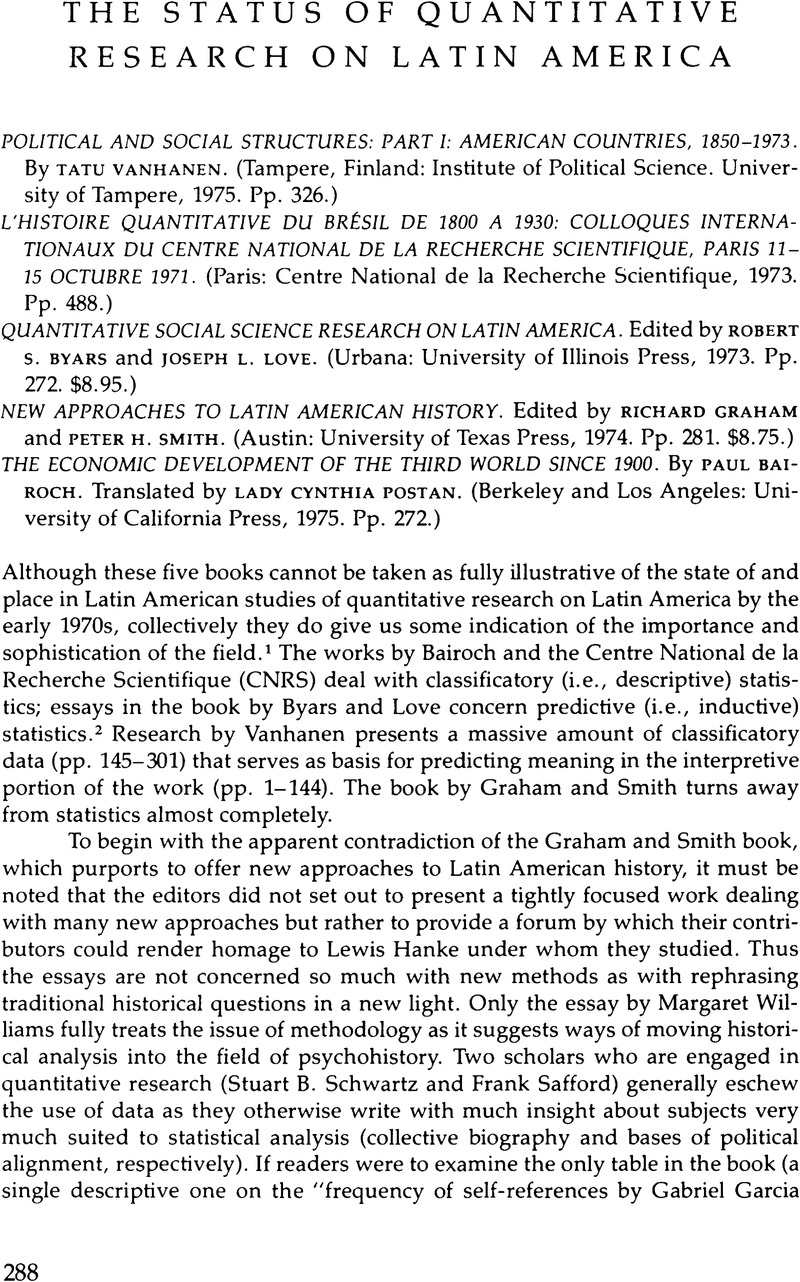No CrossRef data available.
Article contents
The Status of Quantitative Research on Latin America
Review products
Published online by Cambridge University Press: 24 October 2022
Abstract

- Type
- Books in Review
- Information
- Copyright
- Copyright © 1978 by the University of Texas Press
References
Notes
1. This review of quantitative literature is intended to update my analysis in Statistics and National Policy (Los Angeles: UCLA Latin American Center Publications, 1974), pp. 16–21.
2. For discussion of classificatory statistics (i.e., data organized into standard categories and utilizing such measures as proportion and central tendency) as compared to predictive statistics (i.e., partial—including sample—data examined through correlation, regression, and factor analysis, model building, etc., to predict a “whole” picture), see the discussion in the “Foreword” to my Quantitative Latin American Studies: Methods and Findings (Los Angeles: UCLA Latin American Center Publications, 1977).
3. Within two of three goals of the book as stated by Graham and Smith (who sought to present “research style” based upon “systematic doubt, an awareness of the need for conceptual rigor, and a willingness to try new methodologies”), however, the new approaches are often quite stimulating. Titles of papers and authors included are: “State and Society in Colonial Spanish America: An Opportunity for Prosopography,” by Stuart B. Schwartz; “Spanish and American Counterpoint: Problems and Possibilities in Spanish Colonial Administrative History,” by Margaret E. Crahan; “Bases of Political Alignment in Early Republican Spanish America,” by Frank Safford; “Political Power and Landownership in Nineteenth-Century Latin America,” by Richard Graham; “An Approach to Regionalism,” by Joseph L. Love; “Comparative Slave Systems in the Americas: A Critical Review,” by John V. Lombardi; “Approaches to Immigration History,” by Michael M. Hall; “Psychoanalysis and Latin American History,” by Margaret Todaro Williams; and “Political Legitimacy in Spanish America,” by Peter H. Smith.
4. Cf. data sources listed in the endpapers of James W. Wilkie and Peter Reich, eds., Statistical Abstract of Latin America 18 (1977).
5. I = xy/100.
6. WI = xy + x/4 + y/4.




